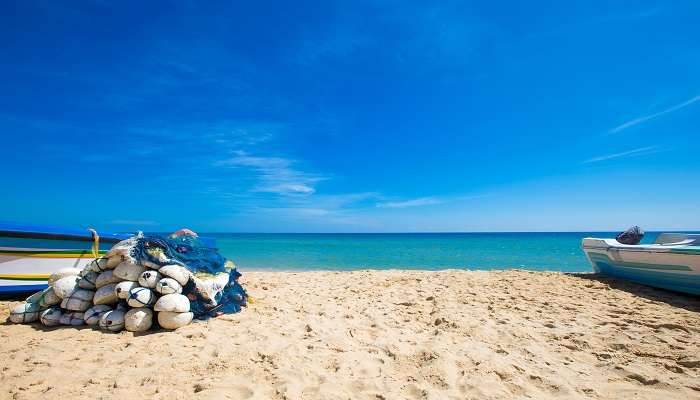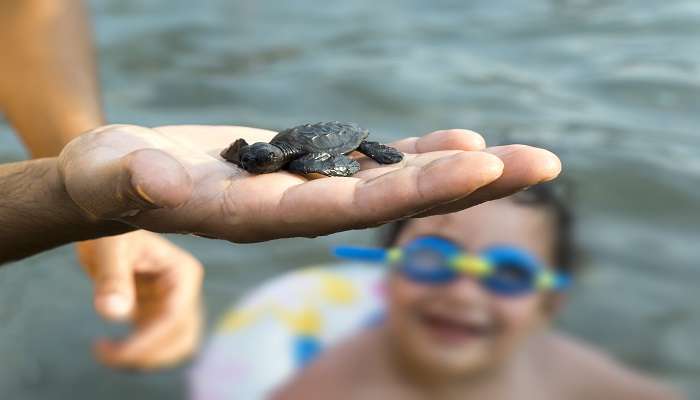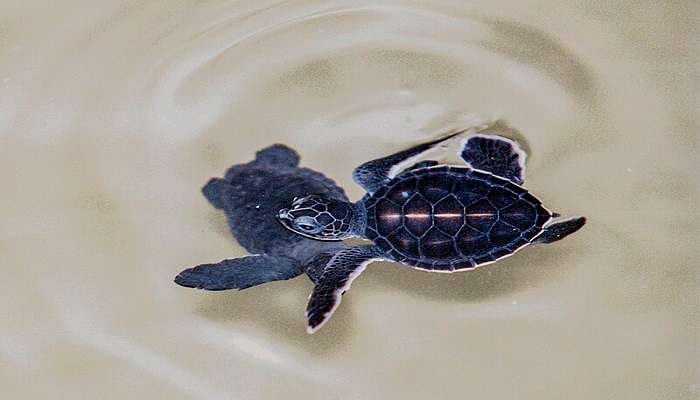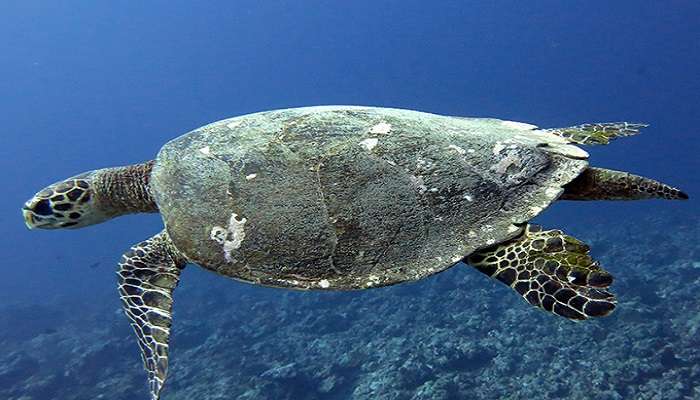Wondrous World Of The Kosgoda Turtle Hatchery Sri Lanka

Kosgoda turtle hatchery Sri Lanka, located in the southern coast that is bathed by the sun’s rays, provides hope for the preservation of ancient marine animals. In this special refuge one gets a rare chance to see how sea turtles go through the arduous process and firsthand comprehension of how hard it is to protect them from perils faced by them in their natural habitat.
A Rich History Rooted In Conservation

In 1981, the Wildlife Protection Society of Sri Lanka took an urgent and pioneering step to address the dwindling numbers of turtle species nesting along the island’s coastlines. Recognizing the grave threats these ancient mariners faced, from habitat loss to poaching and bycatch, they established the Kosgoda Turtle Hatchery as a first-generation conservation initiative. What began as a modest endeavour to safeguard the region’s vulnerable turtle populations has effectively transformed into a vibrant, multifaceted project that has captured the hearts and minds of visitors from across the globe. Today, the Kosgoda Turtle Hatchery stands as a beacon of hope, playing a crucial role in raising awareness and fostering a deep appreciation for these gentle giants among people of all ages and backgrounds. Through immersive educational experiences, hands-on hatchling releases, and a commitment to empowering local communities, this remarkable sanctuary has become a driving force in teaching society about the paramount importance of conserving these divine beings that have graced our oceans for millions of years. What was once an urgent measure has blossomed into a global movement, inspiring individuals worldwide to become active stewards in preserving our planet’s rich biodiversity.
Must Read: Sri Lanka Tourist Places
The Hatchery Experience: A Captivating Journey

Upon arrival, guests receive a welcome from a group of guides who are passionate about their job and excited to share their knowledge. The tour starts with an informative overview of the types of turtles that inhabit the waters of Sri Lanka, such as the Olive Ridley, Green, Hawksbill and the majestic Leatherback. As the tour progresses, visitors are guided to the highlight: the outdoor enclosures where numerous baby turtles are kept. These tiny creatures, no more than a palm, captivate observers as they scurry around, seemingly unaware of the joyful gasps and camera clicks around them. The guides offer in-depth explanations about how the hatchery operates, including the processes involved in collecting and incubating eggs and releasing hatchlings into the ocean once they are ready to thrive. One of the tour’s parts is witnessing these young turtles’ release. With supervision from hatchery staff, guests can gently place these creatures on sandy shores, where they instinctively make their way towards crashing waves, beginning their remarkable journey into the vast ocean. Visiting the site is truly a moving and reflective experience that underscores the nature of existence and the significance of safeguarding these age beings for future generations.
Educational Initiatives And Conservation Efforts

The Kosgoda Turtle Hatchery is much more than a tourist attraction—it’s a living classroom that impresses upon its visitors the numerous threats facing these ancient creatures. From plastic pollution and habitat destruction to poaching and the impacts of climate change, the staff works untiringly to raise awareness and inspire action. Visitors can learn about the variety of initiatives being taken up by the hatchery in the field of conservation, which include beach cleanups, community outreach programs, and collaboration with local fishermen to minimise bycatch—that is, the accidental capture of non-target species. The hatchery also plays a very important role in supporting scientific research and sharing valuable data and insights that contribute to the global effort to protect sea turtles. Probably the most inspiring part about the Kosgoda Turtle Hatchery is its strong commitment to the local community’s empowerment. The hatchery has grown into a leading force in preserving Sri Lanka’s rich natural heritage by providing employment and fostering a sense of ownership over the environment. It’s an absolute treat to see how local people have taken up this cause, with many families dedicating their time and effort to ensure these ancient mariners’ survival.
Suggested Read: Romantic Things To Do In Sri Lanka
Accommodations And Nearby Attractions

For those wishing to extend their stay and fully immerse themselves in the region’s natural wonders, several accommodation options are available in the nearby town of Kosgoda. From budget-friendly guesthouses to luxurious beachfront resorts, visitors can find a range of choices to suit their preferences and budgets. While in the area, it’s worth exploring some of the other attractions Sri Lanka’s southern coast offers. The historic Galle Fort, a UNESCO World Heritage Site, is a must-visit destination, offering a glimpse into the island’s rich colonial past and a chance to wander through its beautifully preserved streets and fortifications. Nature enthusiasts can venture into the lush Sinharaja Forest Reserve, a biodiversity hotspot teeming with an array of flora and fauna, including rare species of birds, reptiles, and mammals. Guided treks through the reserve provide an opportunity to witness the island’s rich biodiversity firsthand and appreciate the delicate balance of its ecosystems. For those seeking a more relaxed experience, the nearby beaches of Unawatuna and Mirissa offer idyllic settings for swimming, sunbathing, and sampling delicious local seafood. Visitors can indulge in water sports, such as snorkelling or scuba diving, or simply bask in the warmth of the sun while listening to the soothing rhythm of the waves.
Timing And Opening Hours

The facility is accessible from 8:30am to 5:30pm daily so that tourists have enough time to leisurely explore its treasures. But, it is advisable to organise your trip at early morning or late afternoon when there are lower temperatures and more active turtles. The best experience of the hatchery can be achieved before noon when there are no high temperatures and crowds.
Further Read: Sri Lanka Tourist Places
The Kosgoda Turtle Hatchery isn’t just your average tourist spot – it’s a living symbol of nature’s resilience and the unwavering dedication of those protecting it. When you visit this incredible sanctuary, you not only gain a deeper appreciation for these ancient creatures, but you also become part of a movement to preserve our planet’s delicate balance. The Kosgoda Turtle Hatchery is a must-see if you’re planning a trip to Sri Lanka. It’s a journey that will leave a lasting impression on everyone, inspiring them to become stewards of our planet’s precious resources.
For our editorial codes of conduct and copyright disclaimer, please click here.
Cover Image Credit: By Green turtle for Wikipedia
Frequently Asked Questions About Kosgoda Turtle Hatchery Sri Lanka
What are the best times to visit the Kosgoda Turtle Hatchery?
The hatchery is open daily from 8:30 AM to 5:30 PM, but the best times to visit are early morning or late afternoon when temperatures are cooler and turtles are more active.
How much does it cost to enter the Kosgoda Turtle Hatchery?
There is an entry fee, typically around $5-10 USD for foreign visitors. Children and locals may get discounted rates.
Can you release baby turtles into the ocean at the hatchery?
Yes, one of the highlights is the chance to carefully release hatched baby turtles onto the beach and watch them make their way into the ocean under staff supervision.
What turtle species can you see at the Kosgoda Hatchery?
The main species are Olive Ridley, Green, Hawksbill, and the endangered Leatherback turtles.
How long does a typical tour of the hatchery last?
Most tours last around 1-2 hours, including time to watch the baby turtles, learn about conservation efforts, and potentially release hatchlings.
Are there guides available and is a guided tour recommended?
Yes, knowledgeable local guides provide informative explanations during tours, which helps enhance the experience.
What else is there to do near the Kosgoda Turtle Hatchery?
Nearby attractions include the Galle Fort, Sinharaja Forest Reserve, beach towns like Unawatuna and Mirissa, and water activities.
People Also Read:
Negombo Lagoon Marakolliya Beach Bentota Snorkeling

Passionate Marketing Student with a flair for storytelling, eagerly embarking on a journey within the vibrant world of travel. Excited to merge analytical acumen with creative skills to elevate the editorial landscape of the travel industry.











